

Flat Rate Shipping
$7.95 flat rate shipping or free over $120


Aussie Owned
Australian family-owned & sourced


School Supplier
Supplier to over 1,000 schools Australia wide
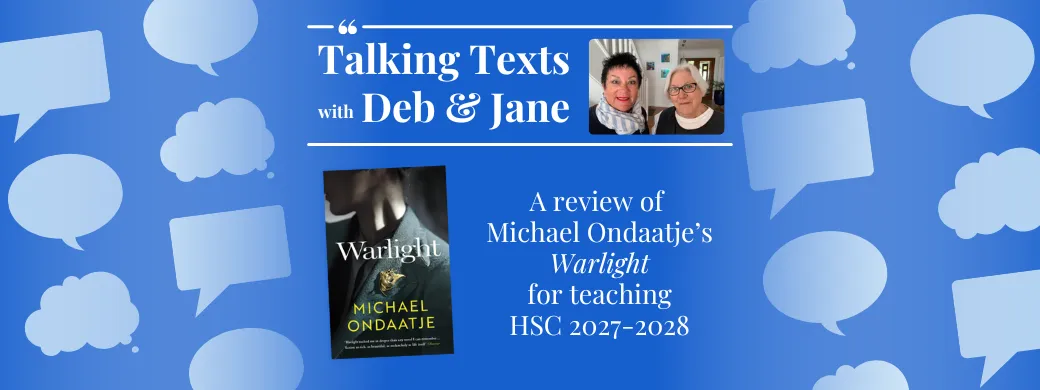
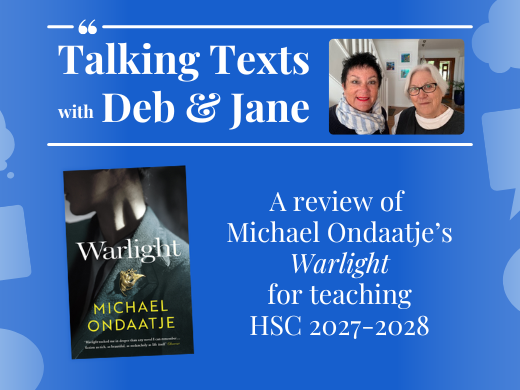
Warlight is set for study in 2027-2028 in Year 12 in Advanced: Critical study of literature.
“In 1945 our parents went away and left us in the care of two men who may have been criminals”. p5.
It’s hard to think of a more tantalising or intriguing first sentence in a novel. Of course, we must read on; the irresistible power of storytelling propels us into the text and into the lives of fourteen-year-old Nathaniel and his older sister, Rachel, and their extraordinary mother, Rose, and the people she left to protect her children.
Nathaniel and Rachel must look to strangers as their chief guardians - Walter, whom they call The Moth, and ex-boxer Norman, The Darter. Both men have a shadowy past, linked in some way with their mother who is away, ‘doing something important.’ The Darter
knows all about fixing races and barging on the Thames and he takes Nathaniel and Rachel on trips along silent waterways and backroads, moving dogs and cargo. Unconventional, sometimes fascinating people, come and go in the Williams’ house as the children grow up in post war London with no clear idea of when or if their parents will return. When they find their mother’s trunk, which was meant to accompany her to Singapore, the mystery of her life deepens further.
A shocking kidnapping incident in which their lives are in danger sends both children away, in different directions, from London. When the reader rediscovers Nathaniel at twenty-eight, living in the place his mother grew up, he is trying to piece together his mother’s life and death. His job at the British Foreign Office helps him to find out about Rose’s story as an intelligence officer during and after the war in Yugoslavia and Italy. It is a story of death and torture, of moral ambiguities and revenge.
Michael Ondaatje is a Sri Lankan born Canadian poet, novelist, short story writer and essayist. He won the Golden Man Booker prize for The English Patient and his novel was made into a prize-winning film. He has written numerous novels and poetry collections and works as an editor. His memoir, Running in the Family deals with his return to his native island of Sri Lanka and his family and blurs the lines of fact and fiction.
Establishing the connection between context, reader, text and author
Context
Ondaatje initially sets his novel in Post World War 2 London and the novel moves to the countryside of Great Britain and to Europe. In London, the ‘warlight’ of the title with its blackouts, its mists and obscurity, continues to bathe the post WW2 houses, pathways and roads (with rubble still in the streets) and moves onto the canals and rivers. Life in in the country in White Paint, where Rose grew up in the house with its ‘nightingale floor’ and where she returned to with Nathaniel after the attempted kidnapping of her children provides a contrast with its natural setting. The war and its aftermath weigh both sections of the novel.
Draw up a table to identify the different areas in the novel and the historical and cultural events that parallel them. Some initial suggestions for you are set out below.
| Settings | Historical/political and cultural considerations |
| Ruvigny Gardens, London | |
| Hotel Criterion London | Displaced immigrants, working conditions, class structures, movement of valuable art works from basements to museums |
| Dulwich College | Hypocrisy of the headmaster |
| Thames river journeys | |
| White Plain Suffolk | |
| Foreign Office London | 1940s and 1050s Intelligence service with clandestine operations, recruiting and gathering (and later destruction) of evidence |
| Italy and Yugoslavia | 1940s - 1950s partisan violence, clandestine operations |
What novels can do
Novels “… ask the big questions: How are we supposed to be living down here? What were we put here to accomplish? What should we value? What is truth, anyway, and how might we recognize it? How can we feel any peace when some people have everything, and others have nothing? How are we supposed to live with joy in a world that seems to want us to love other people but then roughly separates us from them in the end, no matter what?” George Saunders in A Swim in a Pond in the Rain
“’We order our lives with barely held stories,’ Nathaniel says at the end of the book. In Warlight, these ‘barely held stories’ knit into a work of fiction as rich, as beautiful, as melancholy as life itself, written in the visionary language of memory.”
The Guardian June 2018.
Task
In what ways does Ondaatje deliver any of the listed narrative elements below to create this extraordinary novel?
Using the novel form authors can:
Examine the construction of this novel
In groups consider 2-3 of the sections in the novel and discuss and record memorable incidents and images. Discuss why the novel might be constructed in this way.
|
Structure of chapters outline |
Observations: on form, narrative and language |
|
Part One |
|
|
A Table Full of Strangers |
|
|
Hellfire |
|
|
Agnes Street |
|
|
The Mussel Boat |
|
|
The Sinister Benevolence of the Lift Boy |
|
|
Schwer |
|
|
Part Two |
|
|
Inheritance In the Archives The saints Arthur McCash |
|
|
A Working Mother A Nightingale Floor |
|
|
The Boy on the Roof Wildfowling Night of the Bombers Quiver The Astral Plough The street of Small Daggers |
|
|
A Walled garden |
|
|
|
|
Storytelling
Nathaniel knows he can “only step into fragments” of the stories of his mother and Marsh Felon, The Moth and the Darter the others associated with her intelligence work as he tries to piece together his mother’s life and death.
Olive Lawrence, one of Nathaniel and Rachel’s surrogate parents in the years their parents are missing, tells him, ‘Your own story is just one, and perhaps not the important one. The self is not the principal thing.’
Task
‘We never know more than the surface of any relationship after a certain stage, just as those layers of chalk, built from the efforts of infinitesimal creatures, work in almost limitless time.’
In the light of the quotation above from Warlight write a 600 word account of the mother and son/daughter relationship and the impact on the children of their parents’ disappearance. Consider the different ways the children reacted to the discovery of their mother’s steamer trunk p15 26-27 and the actions of Rose to protect her children.
Aesthetic qualities of the novel and its storytelling
Ondaatje is a poet as well as a novelist and many of the images in the novel are evocative and vital to our understanding. The night river journeys, a dim and darkened London seen by ‘warlight,’ (as hard to navigate as the memories in Nathaniel’s mind), the houses for rent or sale, shorn of furniture and Nathanial and Agnes making love amid the running greyhounds, the final moments of Rose: all are indelibly printed on the mind.
The unattributed epigraph at the beginning of the book ‘Most of the great battles are fought in the creases of topographical maps’ gives insight into the interest Ondaatje has in exploring the secrets and lies in historical contexts such as the intelligence work during and after the war and in family contexts such as the Williams’ relationships. Maps become metaphors for the silences and gaps in their lives. Nathaniel makes maps to make sense of his life.
Task
Look through the novel and explore the metaphors and maps that occur and the impact they have on the narrative.
Language use
Task
Keep a record of unfamiliar words and phrases.
Ondaatje introduces the reader to a range of vocabulary from other cultures and languages. For example:
Schwer: German for ‘difficult’ or ‘heavy’. The Moth tells Nathaniel and Rachel, that the composer, Mahler, used to write ‘schwer’ against sections in his musical scores. The Moth warned the children that they needed to prepare for such moments as nothing was safe anymore.
Find the origin of the ‘nightingale floor,’ a defensive alarm which Rose thought would keep her safe.
Developing an informed personal perspective as a reader
Following a group debate on the merits of the novel and its cultural contribution students collect and share reviews of Warlight, reflecting both positive and negative receptions.
Then, following a group discussion on the conventions of review writing and possible ways to those conventions each student will write a review reflecting their own perspective on the novel.
Some reviews to get them started can be found at:
1.Through its representation of human experiences, Ondaatje’s Warlight strengthens the significance of honesty. To what extent does your interpretation of Warlight support this view? In your response, make detailed reference to the novel.
2. In what ways does the opening extract from Warlight introduce key ideas and aesthetic features of this novel?
In 1945 our parents went away and left us in the care of two men who may have been criminals. We were living on a street in London called Ruvigny Gardens, and one morning either our mother or our father suggested that after breakfast the family have a talk, and they told us that they would be leaving us and going to Singapore for a year. Not too long, they said, but it would not be a brief trip either. We would of course be well cared for in their absence. I remember our father was sitting on one of those uncomfortable iron garden chairs as he broke the news, while our mother, in a summer dress just behind his shoulder, watched how we responded. After a while she took my sister Rachel's hand and held it against her waist, as if she could give it warmth.
In your response make close reference to the extract and to the novel as a whole.
3. How is the quest or pursuit for control explored through characterisation in Ondaatje’s Warlight? In your response, make detailed reference to the novel.
There are requirements for particular types of texts to be selected from the prescribed texts list for different courses. Great care must be taken in selecting a pathway of texts that meets all the requirements.
Four prescribed texts to be studied with at least ONE from each of the following categories (prose fiction, poetry, and drama OR nonfiction OR film OR media) and ONE authored by Shakespeare
Warlight is a novel (pf) and includes a range of social, cultural and gender perspectives.
The pathways below include a drama text by Shakespeare which can be found in all sections of the course except Texts and Human Experiences.
Pathway 1 for HSC Advanced English with Warlight as prose fiction first choice
Film
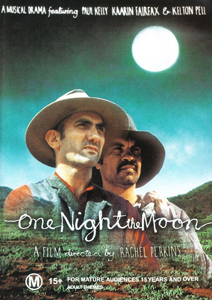

Texts and human experiences:
One Night the Moon directed by Rachel Perkins
Drama (Shakespeare) | Poetry
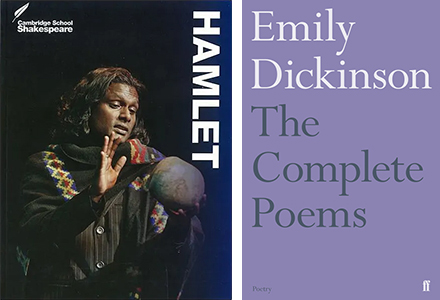

Textual conversations:
Hamlet by William Shakespeare | Selected Poems of Emily Dickinson
Prose Fiction
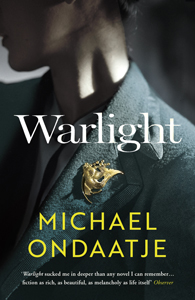

Critical study of literature:
Warlight by Michael Ondaatje
Pathway 2 for HSC Advanced English with Warlight as prose fiction first choice
Poetry
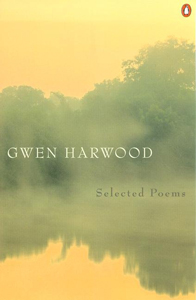

Texts and human Experiences:
Selected Poems by Gwen Harwood
Drama (Shakespeare) | Nonfiction
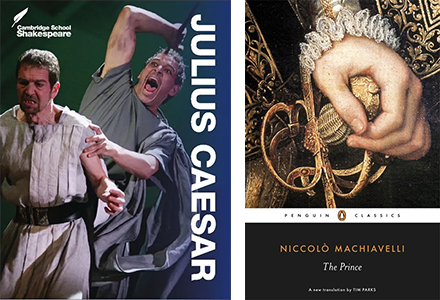

Textual conversations:
Julius Caesar by William Shakespeare | The Prince by Niccolo Machiavelli
Prose Fiction
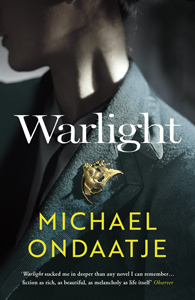

Critical study of literature:
Warlight by Michael Ondaatje